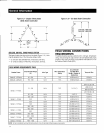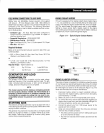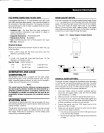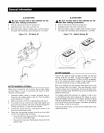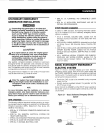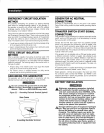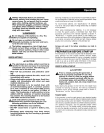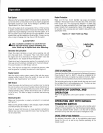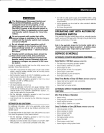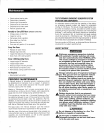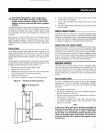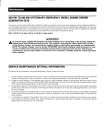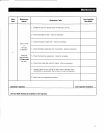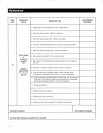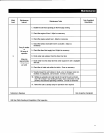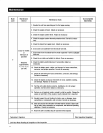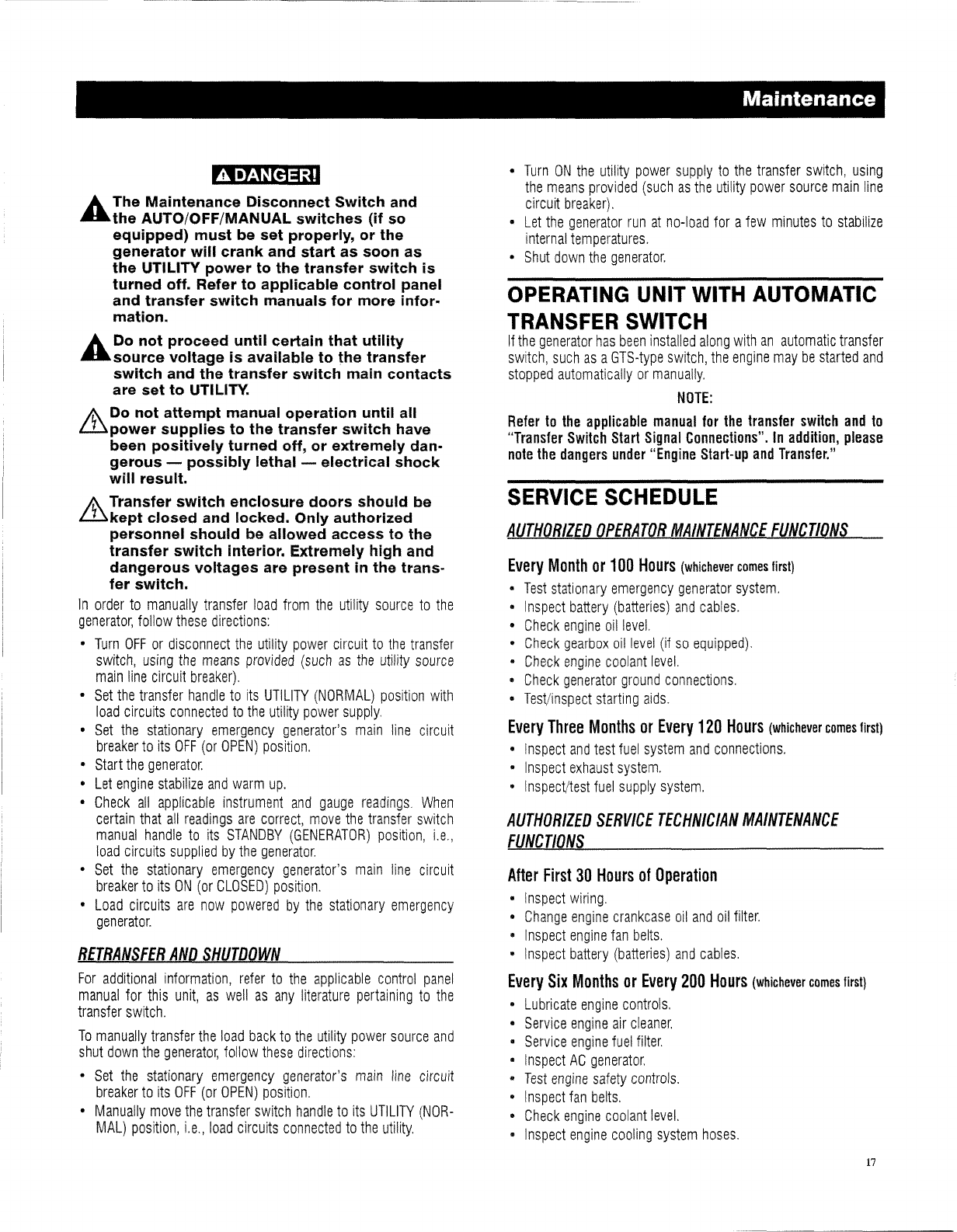
~
A The Maintenance Disconnect Switch and
....
the AUTO/OFF/MANUAL switches (if so
equipped) must be set properly, or the
generator will crank and start as soon as
the UTILITY power to the transfer switch is
turned off. Refer to applicable control panel
and transfer switch manuals for more infor-
mation.
A Do not proceed until certain that utility
....
source voltage is available to the transfer
switch and the transfer switch main contacts
are set to UTILITY.
/r\ Do not attempt manual operation until all
illpower
supplies to the transfer switch have
been positively turned off,
or
extremely dan-
gerous - possibly lethal - electrical shock
will result.
/i).
Transfer switch enclosure doors should be
~kept
closed and locked. Only authorized
personnel should be allowed access to the
transfer switch Interior. Extremely high and
dangerous voltages are present in the trans-
fer switch.
In
order
to
manually
transfer
load
from
the
utility
source
to
the
generator,
follow
these
directions:
•
Turn
OFF
or
disconnect
the
utility
power
circuit
to
the
transfer
switch,
using
the
means
provided
(such
as
the
utility
source
main
line
circuit
breaker).
•
Set
the
transfer
handle
to
its
UTILITY
(NORMAL)
position
with
load
circuits
connected
to
the
utility
power
supply.
•
Set
the
stationary
emergency
generator's
main
line
circuit
breaker
to
its
OFF
(or
OPEN)
position.
•
Start
the
generator.
•
Let
engine
stabilize
and
warm
up.
•
Check
all
applicable
instrument
and
gauge
readings.
When
certain
that
all
readings
are
correct,
move
the
transfer
switch
manual
handle
to
its
STANDBY
(GENERATOR)
position,
i.e,
load
circuits
supplied
by
the
generator.
•
Set
the
stationary
emergency
generator's
main
line
circuit
breaker
to
its
ON
(or
CLOSED)
position.
•
Load
circuits
are
now
powered
by
the
stationary
emergency
generator.
RETRANSFER
AND
SHUTDOWN
For
additional
information,
refer
to
the
applicable
control
panel
manual
for
this
unit,
as
well
as
any
literature
pertaining
to
the
transfer
switch.
To
manually
transfer
the
load
back
to
the
utility
power
source
and
shut
down
the
generator,
follow
these
directions:
•
Set
the
stationary
emergency
generator's
main
line
circuit
breaker
to
its
OFF
(or
OPEN)
position.
•
Manually
move
the
transfer
switch
handle
to
its
UTILITY
(NOR-
MAL)
position,
i.e.,
load
cirCUits
connected
to
the
utility.
Maintenance
•
Turn
ON
the
utility
power
supply
to
the
transfer
switch,
using
the
means
provided
(such
as
the
utility
power
source
main
line
circuit
breaker)
.
•
Let
the
generator
run
at
no-load
for
a
few
minutes
to
stabilize
internal
temperatures.
•
Shut
down
the
generator.
OPERATING
UNIT
WITH
AUTOMATIC
TRANSFER
SWITCH
If
the
generator
has
been
installed
along
with
an
automatic
transfer
switch,
such
as
a
GTS-type
switch,
the
engine
may
be
started
and
stopped
automatically
or
manually.
NOTE:
Refer
to
the
applicable
manual
for
the
transfer
switch
and
to
"Transfer
Switch
Start
Signal
Connections".
In
addition,
please
note
the
dangers
under
"Engine
Start-up
and
Transfer."
SERVICE
SCHEDULE
AUTHORIZED
OPERATOR
MAINTENANCE
FUNCTIONS
Every
Month
or
1
00
Hours
(whichever
comes
first)
•
Test
stationary
emergency
generator
system.
•
Inspect
battery
(batteries)
and
cables.
•
Check
engine
oil
level.
•
Check
gearbox
oil
level
(if
so
equipped).
•
Check
engine
coolant
level.
•
Check
generator
ground
connections.
•
Test/inspect
starting
aids.
Every
Three
Months
or
Every
120
Hours
(whichever
comes
first)
•
Inspect
and
test
fuel
system
and
connections.
•
Inspect
exhaust
system.
•
Inspect/test
fuel
supply
system.
AUTHORIZED
SERVICE
TECHNICIAN
MAINTENANCE
FUNCTIONS
After
First
30
Hours
of
Operation
•
Inspect
Wiring.
•
Change
engine
crankcase
oil
and
oil
filter.
•
Inspect
engine
fan
belts.
•
Inspect
battery
(batteries)
and
cables.
Every
Six
Months
or
Every
200
Hours
(whichever
comes
first)
•
Lubricate
engine
controls.
•
Service
engine
air
cleaner.
•
Service
engine
fuel
filter.
•
Inspect
AC
generator.
•
Test
engine
safety
controls.
•
Inspect
fan
belts.
•
Check
engine
coolant
level.
•
Inspect
engine
cooling
system
hoses.
17



